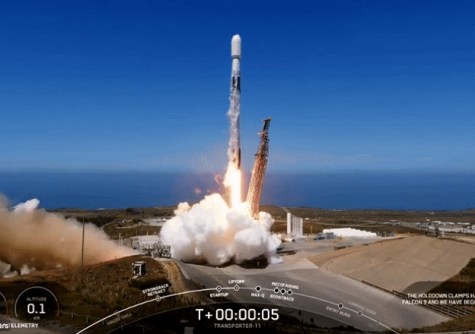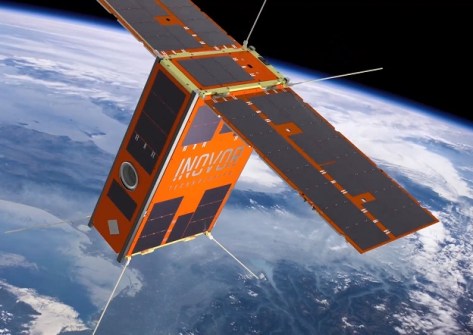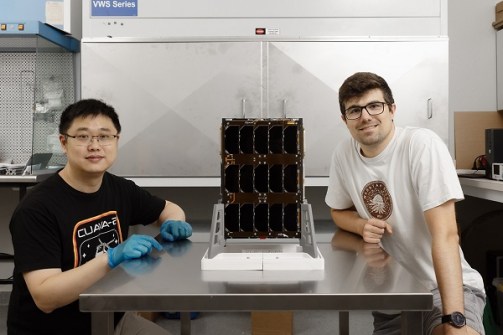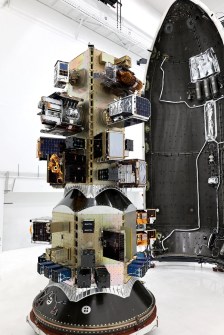
In a major milestone for the Australian space sector, three homegrown satellites were lofted into orbit on Saturday, 17 August, aboard the SpaceX Transporter-11 flight.
The three satellites are:
- The South Australian-government-funded Kanyini, a collaboration between SmartSat CRC, Inovor and Myriota;
- CUAVA-2, the second satellite launched under the aegis of the ARC Training Centre for CubeSats, UAVs, and their Applications (CUAVA); and
- Waratah Seed-1, a NSW Government-part-funded pilot project to space qualify and launch NSW-developed technologies.
The launch of the Kanyini satellite is the outcome of a $6.5 million-dollar, multi-year project. Once fully commissioned, it will both function as a testbed as well as a supplier of operational Earth observation (EO) data for government agencies and research bodies that have an interest in environmental sustainability, bushfire detection and prevention, urban heat islands, and natural disasters such as landslides and floods.
The heat islands project is being led by the South Australian Department for Environment and Water and Greening Adelaide, while the predictive-AI-for-natural-disasters project is being led by the Queensland University of Technology and the European Space Agency’s Phi-Lab.
A feature of the mission that is becoming more and more common in Earth orbit, is the employment of AI and edge-computing resources aboard the spacecraft itself in order to process the data gathered before transmitting it back to Earth.

Kanyini’s EO payload, supplied by Dutch engineering company cosine, is called HyperScout 2.
HyperScout 2 is a three-in-one instrument that combines hyperspectral and thermal imaging with data processing and AI capabilities. It will provide imaging in the visible and near infrared.
“The spectral range of HyperScout 2 enables an extremely detailed analysis of land cover, supporting research into crop health, forests, inland water and coasts,” said Peter Nikoloff, Kanyini Mission Director at SmartSat.
“The thermal infrared imager will provide vital information on heat generators in South Australia. In parallel with the development phase, SmartSat is formulating a research program with our partners to make optimal use of the systems once in orbit.”
CUAVA-2 and Waratah Seed-1
Back in July 2021, the NSW Government, through its Investment NSW arm, awarded CUAVA $500,000 to deliver the ‘rideshare’ Waratah Seed-1 mission, formally known as the NSW Space Qualification Mission – Waratah Seed.
Waratah Seed-1 is a 6U Cubesat carrying payloads from six local space startup companies, and as such is being described as Australia’s first commercial rideshare space mission.
The mission’s goal is to “launch NSW-developed space payloads into orbit, providing NSW space companies affordable access to space, along with providing an opportunity to test their space capabilities, while gaining flight heritage”.

In addition to its part-funding by the NSW Government, the Waratah Seed consortium includes CUAVA and the University of Sydney, the Australian Space Engineering Research Centre (ACSER) at the University of New South Wales (UNSW), the University of Technology Sydney (UTS), Macquarie University, Delta-V Space Hub and Saber Astronautics.
The aim is for the spacecraft to operate for at least six months, which will give local space system engineers and technicians valuable experience in real space operations.
CUAVA-2, another 6U Cubesat, carries a range of scientific payloads, the primary two of which are:
- A GPS reflectometry receiver, developed by ACSER, which will demonstrate the ability to measure GPS signals scattered off the sea surface in order to determine the sea state.
- A ‘novel’ hyperspectral imager to “provide data for applications across agriculture and forestry, coastal and marine environments, urban areas, water hazards and mineral exploration”.
Writing on LinkedIn, Iver Cairns, Professor in Space Physics and Director of CUAVA, said he was “thrilled to report” that both the CUAVA-2 and Waratah Seed-1 CubeSats have been deployed into orbit and that “both satellites are alive, well, and communicating with us”.
“With active communications established for at least now, as well as beacon reception and decoding… Our focus now shifts to commissioning the satellites and making active communications accomplished. We envision this taking 1 month,” he added.

Other EO-related payloads carried on the Transporter-11 mission include:
- Tanager-1, Planet Labs’ first hyperspectral satellite.
- SuperDoves (Flock 4BE) for Planet Labs, comprising 36 satellites for Earth monitoring.
- Φsat-2 (pronounced ‘phisat-2’), a European Space Agency AI-powered Cubesat for Earth observation.
- Seven LEMUR satellites for Spire Global, ranging in size from 3U to 16U, intended for applications such as weather forecasting, global soil moisture analysis and ship tracking.
- HYPSO-2, a 6U CubeSat built by Nanoavionics for the Norwegian University of Science and Technology, carrying an ocean-monitoring hyperspectral imager.
- Nge, another 6U CubeSat built by Nanoavionics for Lemu Earth, carrying a hyperspectral camera.
- Hyperfield-1, yet another 6U CubeSat with a hyperspectral imager, this time for Finland’s Kuva Space.
- WREN-1 is a 6U CubeSat from Hungary’s C3S, carrying an imaging payload for monitoring water resources.
- Tyche, a 150kg EO imaging satellite built by Surrey Satellite Technology for the UK Space Command.
- NuSat-48/49/50, three 40kg high-resolution EO satellites for Satellogic.
- EagleEye, a 60kg EO satellite for Poland’s Creotech Instruments, which will have a resolution of close to 1m in the visible and NIR bands.
- CAKRA-1, an 8U CubeSat with an imaging payload built by GomSpace for Indonesia’s Ministry of Marine Affairs and Fisheries.
- Capella-15/Acadia-5, a 160kg SAR satellite for Capella Space carrying a synthetic aperture radar (SAR).
- Umbra 9 and 10, a tandem pair of 83kg SAR satellites for Umbra Space.
- X33/39/40/43, four 90kg SAR satellites for ICEYE.
- Deimos, a 1.5U CubeSat for Aethero Space carrying imaging and edge computing payloads for demonstrating AI/ML applications.
- TORO, a Taiwan Space Agency 3U CubeSat built carrying a visible/near-IR imaging payload from Pyras Technology.






